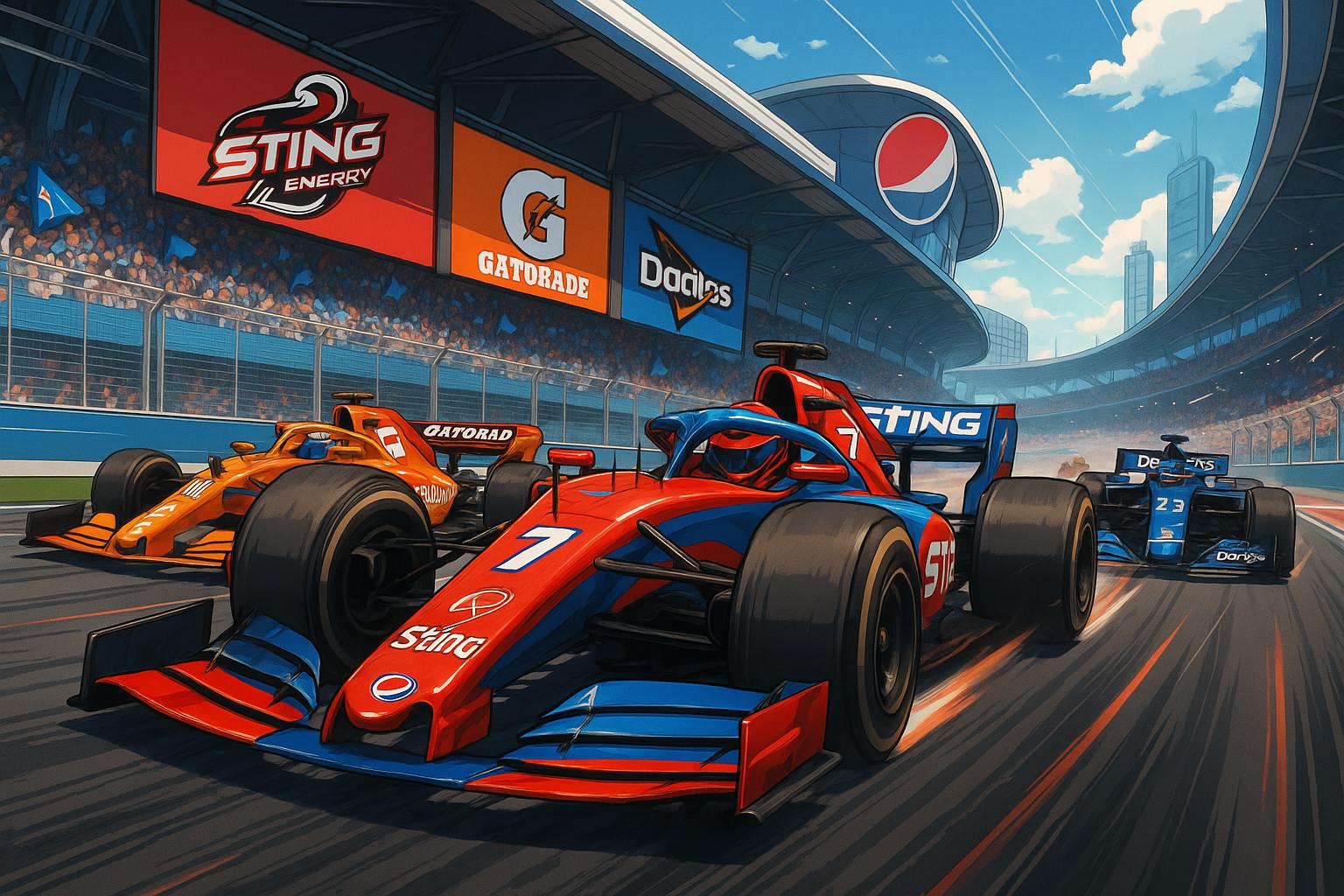PepsiCo's recent announcement of its multi-year global partnership with Formula 1, revealed on May 27, signals a bold move that marries two titans of their respective fields. With brands like Sting Energy, Gatorade, and Doritos set to take centre stage in one of the world’s fastest-growing sports, this collaboration aims to transcend traditional sponsorship by embedding itself deeply within the thrill and emotional spectacle of live racing. While specific financial terms remain undisclosed, the partnership promises to unleash a flurry of trackside branding, digital campaigns, and exclusive hospitality experiences across multiple Grand Prix events starting in 2025.
The nature of PepsiCo's chosen brands is particularly telling; Sting and Gatorade seamlessly fit into narratives of energy and performance, while Doritos adds a playful twist, offering a brand that thrives on cultural engagement. Eugene Willemsen, PepsiCo’s chief executive for international beverages, emphasised this synergy, stating, “This landmark partnership... represents a perfect fusion of two global powerhouses that share a passion for creating extraordinary fan experiences.” Such expressions underscore the escalating trend whereby brands seek not only visibility but also genuine connection with fans.
PepsiCo's strategic entry into Formula 1 is part of a larger trend among global brands eager to leverage sports partnerships to enhance brand credibility and relevance. This move follows another key partnership, with Mastercard, which recently upgraded its sponsorship of the UEFA Champions League, expanding its offerings to include innovative digital experiences as they gear up for the 2025 final. Additionally, Netflix is reportedly exploring content-driven collaborations with the NBA, focusing on hybrids of live sports and branded docuseries, suggesting that the convergence of entertainment and sports marketing is set to evolve further.
The timing of PepsiCo's partnership aligns with Formula 1's surging popularity, particularly among younger audiences in the United States, a trend amplified by the success of the Netflix series "Drive to Survive." This show has turned driver rivalries and pit strategies into captivating narratives, attracting a digitally savvy fanbase that expects more than just standard advertising. By embedding itself into various aspects of these racing events—from hydration strategies during intense moments to snacks designed for viewing parties—PepsiCo aims to transform brand presence into a vital part of the overall fan experience.
Stefano Domenicali, President and CEO of Formula 1, heralded this partnership as “a sparkling union that will bring together tradition and innovation,” promising to deliver excitement and unforgettable experiences for global fans. Notably, this partnership is part of a broader trend at Formula 1 to open its doors to diverse sponsorships. Recently, the sport announced a historic 10-year collaboration with luxury brand group LVMH, enhancing its appeal within upscale markets while focusing on high-end experiences during its 75th anniversary celebrations in 2025. Similarly, American Express expanded its deal to become an official partner, aiming to provide exclusive benefits to card members across various Grands Prix.
The geographic precision of Formula 1 further optimises PepsiCo's endeavour. Each race presents opportunities to tap into regional markets, allowing tailored experiences in burgeoning consumption areas—be it energy drinks in India or Gatorade in hydration-focused markets like the US and Latin America. Meanwhile, Doritos can leverage its reputation for cultural engagement, tapping into the vibrant dynamics of race weekends with campaigns that resonate with Gen Z humour and themes.
This strategic move reflects an evolving marketing model predicated on rapid consumer engagement and participatory experiences. However, embracing this model does not come without risks. The demand for resource-intensive experiential strategies necessitates careful execution, as poorly conveyed messages or mishaps during live events can quickly tarnish brand reputations.
PepsiCo appears resolute in committing to this high-stakes strategy, viewing its partnership with Formula 1 not merely as a quest for visibility but as a pursuit of long-term relevance in a fast-paced market. As more brands like Mastercard, Netflix, and others follow suit, the competitive landscape of sports sponsorship is primed for transformation, ushering in a new era of immersive and engaging marketing strategies that align closely with the fervour of modern fandom.
Reference Map:
- Paragraph 1 – [1]
- Paragraph 2 – [1], [2]
- Paragraph 3 – [1], [3], [4]
- Paragraph 4 – [1], [2], [6]
- Paragraph 5 – [1], [2], [5]
- Paragraph 6 – [1], [2], [3]
- Paragraph 7 – [1]
Source: Noah Wire Services
